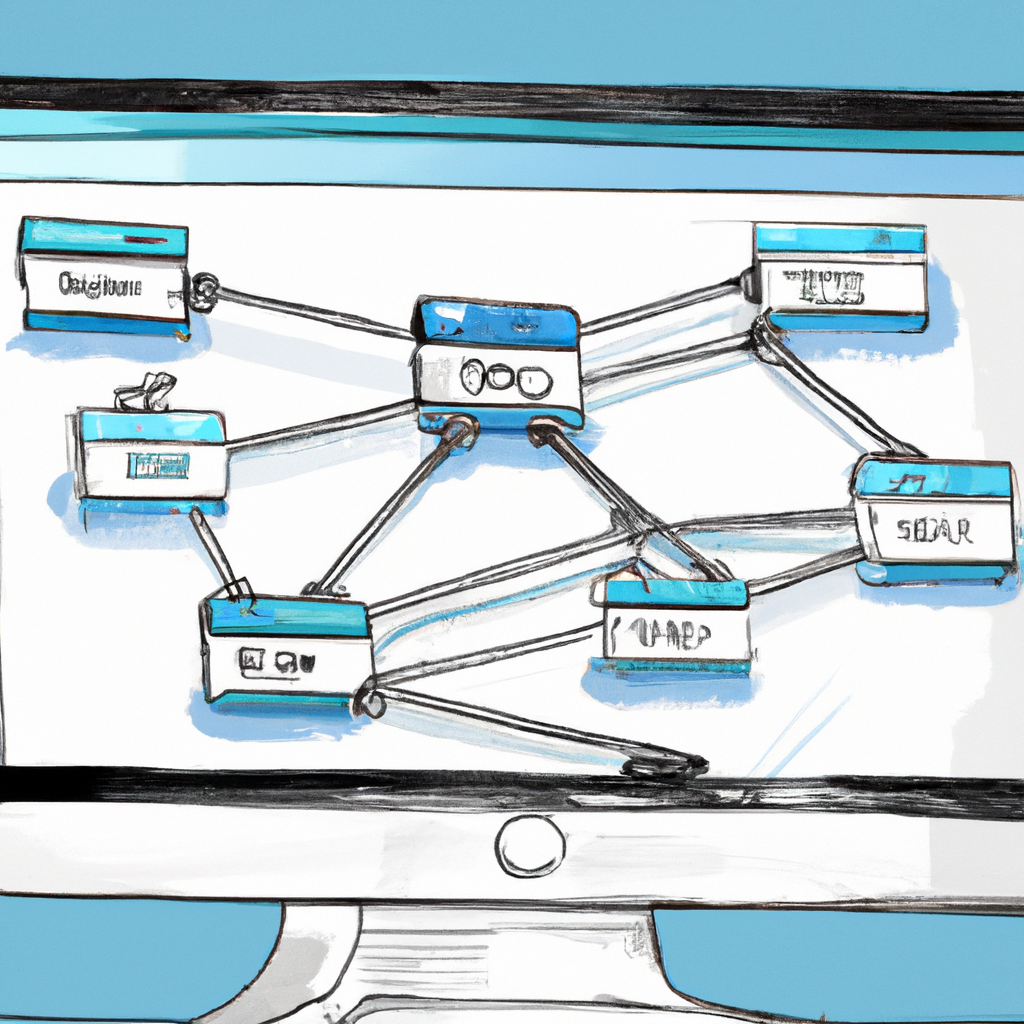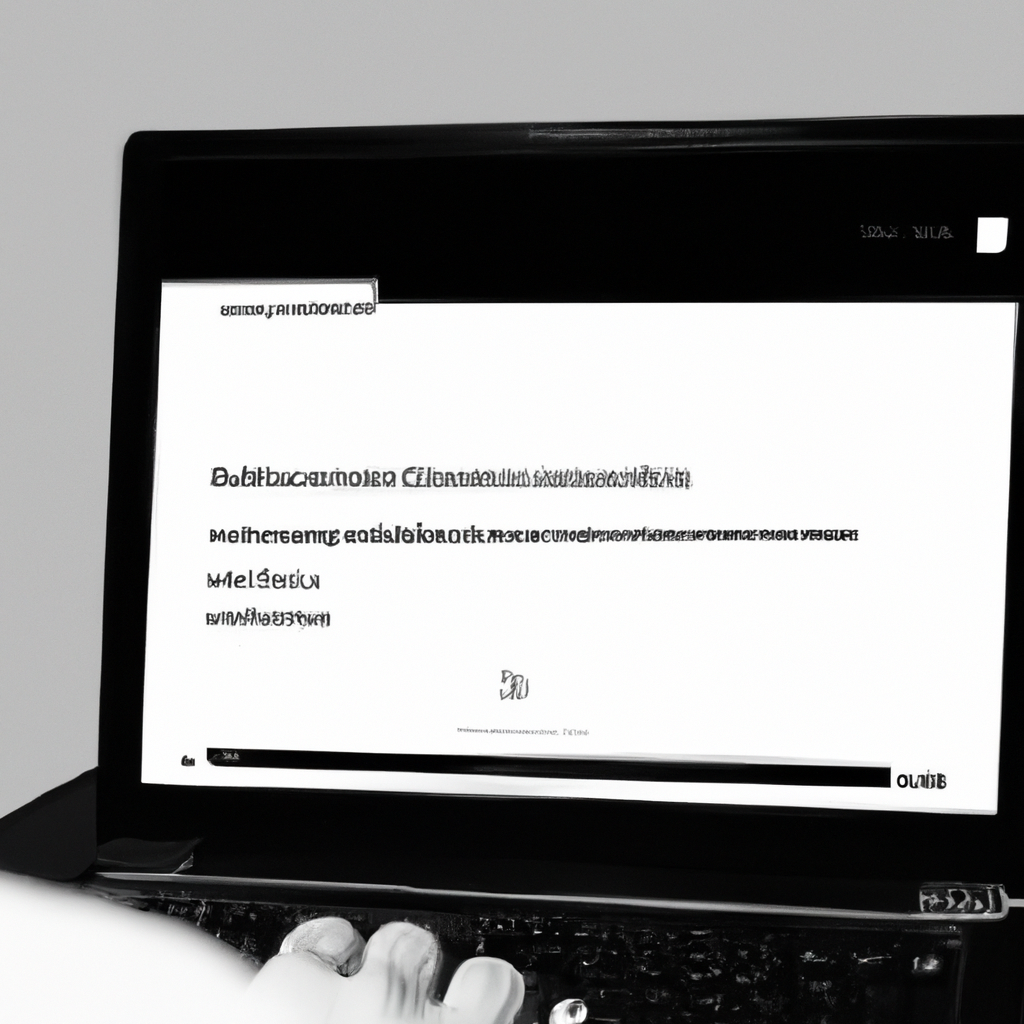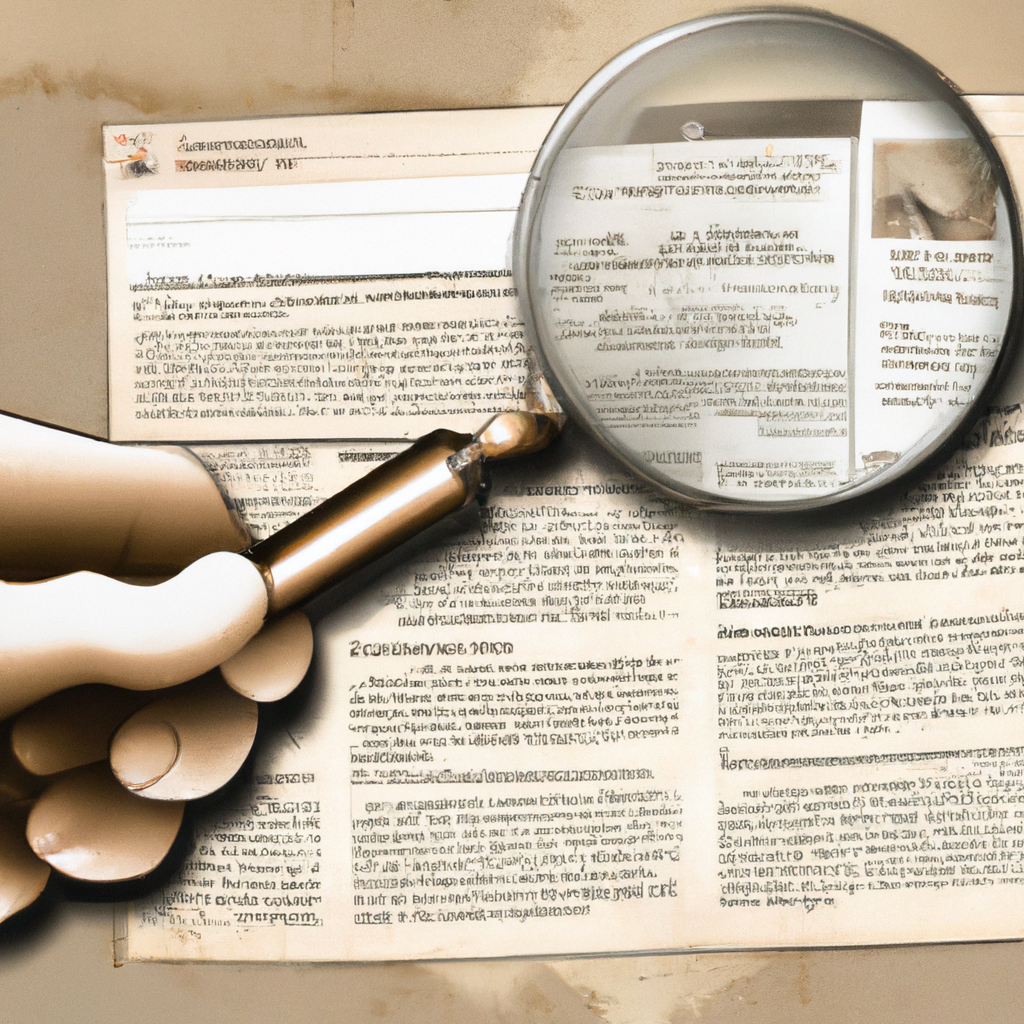Key Takeaway:
- Backlinks play a crucial role in improving a website’s search engine rankings: they are one of the top factors that search engines consider when determining a page’s authority and relevance.
- The quality of backlinks is important: high-quality backlinks, from authoritative and relevant sources, are more valuable than low-quality backlinks.
- Effective link building strategies can help improve website rankings: some strategies include guest blogging, broken link building, and the skyscraper technique. However, it is important to prioritize content quality and avoid common backlink mistakes.
Understanding the Importance of Backlinks for SEO
Backlinks are an essential part of effective online marketing. In this section, we’ll explore the importance of backlinks for SEO and how they impact search engine rankings. By understanding the need to comprehend backlinks, we can uncover their key role in boosting website visibility and traffic. Get ready to dive into the world of backlinks and discover how they can make a significant difference in your online business success.
The Need to Understand the Importance of Backlinks
Backlinks are essential for SEO. It’s vital to understand their importance. They aid in increasing a website’s visibility and search engine rankings. Quality backlinks are key for higher positions.
Authoritative and relevant websites linking to a site make it more valuable to search engines. Fewer, better-quality links can significantly enhance SERP position. It’s wise to consider what makes a link high-quality.
There are guidelines to improve SEO by link building. Examples include guest blogging, locating broken links on authority sites, and using the SkyScraper Technique. Creating content targeted at key audiences is great for drawing natural and authoritative links.
Internal linking also helps ensure a website functions properly. There are many free and paid link building tools to find opportunities that lead to traffic. It’s key to understand the role of such tools and use them wisely.
When measures are taken and tracked regularly, success in link building boosts SERP rankings, raising the likelihood of customer interactions and retention. Without backlinks, a website’s search engine ranking is lost.
How Backlinks Impact Search Engine Rankings
Backlinks are important for search engine optimization. They are very influential on search engine rankings and are an essential part of the algorithm used by Google. Quality backlinks from reliable websites show support for your website, increasing its reputation and power online.
To increase website visibility, it is important to understand how backlinks affect search engine rankings. Google notices links when making rankings, with quality ones showing the excellence of your web pages.
In addition to showing the importance of your website content, backlinks also help bring more people to your website. By creating good links, you can increase user interest and increase the conversion rate.
A good link building strategy can give lots of advantages for search engine rankings. It can help you be seen by people who you wouldn’t have otherwise reached. Doing things like guest blogging, broken link building, and the skyscraper technique, can help you get backlinks from good websites and make your visitors happy.
Factors Determining the Quality of Backlinks
High-quality backlinks are the cornerstone of an effective SEO strategy, but not all links are created equal. In this section, we’ll explore the factors that determine the quality of backlinks, including the types of links that are essential for understanding the importance of high-quality backlinks. Additionally, we’ll dive into the significance of links that point directly to your website and how these links can impact your overall search engine ranking.
Links Important to Understand the Need for High-Quality Backlinks
High-quality backlinks are essential for successful SEO. They help increase search engine rankings and draw more visitors to your website. Without quality backlinks, your website may not show in the top search engine results pages.
Backlinks influence a website’s ranking. Relevance, authority, and trustworthiness of sites linking to yours affect the quality of these backlinks. Preferably, these links should come from reliable sources related to your industry or niche.
Anchor text also plays a significant role in the quality of backlinks. Target keyword anchor text allows search engines to comprehend your website, making it simpler to increase your search visibility.
To create effective high-quality backlinks, various link building strategies can be used such as guest blogging, skyscraper technique, and broken link building. Quality content also attracts valuable links with time.
Proper internal linking promotes clear website structure for visitors and better crawling by search engines, leading to an improved user experience.
Tools like Ahrefs and Moz can identify the quality of existing backlinks and possible opportunities to improve your website’s link profile.
Measuring the success of strategies used will guarantee that you only adopt what works best for your website’s particular needs, as each approach presents different metrics like Domain Authority & organic traffic.
It is crucial to acquire high-quality links while avoiding common mistakes like buying links. You must also spot Toxic Back Links that could harm your SEO campaign and practices that manipulate Search Engines’ Algorithms. It is important to understand the need for high-quality backlinks for achieving successful SEO results.
The Importance of Links Pointing to Your Website
When it comes to SEO, links are key. These links affect your search engine ranking and link quality. The anchor text used in these links is important too.
Links help search engines like Google index your website easily. They also improve domain authority and drive traffic from external sources. Quality links hold more value than many poor ones. Additionally, content quality affects link building success.
Anchor text is another link quality factor. It should have appropriate keyword targets to increase value. Link building metrics like page views and time spent on the website can measure success. Common mistakes should be avoided.
Guest blogging and broken link building are good for high-quality links. Content should be informative and clear to earn valuable inbound links. A data-driven approach focusing on strong backlinks and quality content is essential for a successful SEO strategy. Anchor text should be chosen carefully.
The Role of Anchor Text in Backlinks
Anchor text plays a critical role in creating effective backlinks to boost the SEO of a website. In this section, we’ll dig into the significance of anchor text for creating successful backlinks. We’ll examine two specific types of anchor text – target keyword and generic – to understand how each one affects the backlinking process. Get ready to learn more about how anchor text can help you optimize your website’s ranking on search engines.
Target Keyword Anchor Text
Targeted keyword anchor text is a must for successful link building. By adding specific keywords to the clickable link that leads to another page, search engines can understand what the page is about, raising visibility and rankings.
Selecting relevant keywords and including them naturally in the content is key. The anchor text has to make clear what the linked page contains, without being repetitive or spammy.
Extra info and context around the anchor text can help. That can be related terms and phrases, descriptions or summaries, or other helpful context.
In summary, optimizing targeted keyword anchor text drives traffic, boosts search engine rankings, and establishes credibility. It’s like a secret code for search engines, giving valuable insights into the webpage.
Understanding the Significance of Anchor Text
Anchor text is key for SEO. It’s the clickable text in a hyperlink. Quality and relevance of this text impacts how search engines examine website content. It’s essential to grasp the importance of anchor text when selecting target keywords. These should accurately describe the linked content and provide context for users and search engines. Natural and diverse phrases should be used. Avoid link farms or irrelevant links which can harm SEO rankings.
A Moz study found that too much exact-match anchor text can lead to Google penalties. This shows the need for using a variety of anchor text phrases strategically. In summary, understanding the significance of anchor text is essential for getting high-quality backlinks and more website traffic.
Effective Link Building Strategies
Looking to enhance your website ranking and drive organic traffic? Look no further than link building. In this section, we’ll cover effective link building strategies, including guest blogging, broken link building, and the skyscraper technique. These strategies rely on the power of backlinks, which can boost your website’s credibility and authority in the eyes of search engines like Google. By implementing these proven tactics, you can improve your website’s SEO and connect with a wider audience.
Guest Blogging
Guest blogging is an effective way to gain visibility. Identify reputable websites in your niche that accept contributions first. Your content must be unique, informative, and engaging. Follow the website owner’s guidelines for word count, images, formatting, etc.
Guest blogging takes time and effort, but has many benefits. It can earn organic reach over time, build backlinks, and increase referral traffic. Neil Patel’s blog post “How Guest Posting Can Help Grow Your Online Audience” states that those who heavily engage in guest blogging experience a 300% increase in referral traffic.
You can also use broken links to your advantage with effective guest blogging.
Broken Link Building
Broken Link Building – a White Hat SEO technique – can help you climb up the search rankings of your website. It requires minimal investment apart from time & effort on research & outreach. It helps to identify content gaps on other websites that you can potentially fill with your own content. Plus, it helps maintain link quality by avoiding spammy/irrelevant links. It’s important to note that this method needs patience & careful monitoring, as it may take some time for webmasters to update broken links.
Creating high-quality content is another crucial element of Broken Link Building. Valuable content can serve as a replacement for broken links. Website owners are more likely to accept your replacement link and thus create a backlink for your site.
Track your progress & measure success with metrics such as domain authority, page rankings & backlink profiles. This will help you decide which efforts are successful & which need more attention.
Jon Cooper from PointBlankSEO offers a great example of this technique. He found 404 pages with .gov domains linked from internal pages. He offered new content for the page & acquired great .gov links from NIST & FHA for his client.
Skyscraper Technique
The Skyscraper Technique is a unique approach to boosting website optimization. To apply this method, you must find a popular topic in your niche and examine the top-ranking pages for that topic. Then, think of an idea that can update the content. This could include adding more data, visuals, videos, or interactive elements for user engagement.
Once you improve the existing content, contact websites linking to the ranking pages. Show them your improved version as a replacement. This way, you can create more backlinks and improve search engine rankings.
However, you have to comprehend your niche and the needs of your target audience to use the Skyscraper Technique efficiently. Though it takes time, the outcome is noteworthy. Brian Dean, the creator of this approach, increased his search engine rankings from 7k organic visitors per month to 103k organic visitors in six months with the help of guest posting.
Importance of Content Quality in Link Building
Creating quality content is essential in link building. In this section, we’ll explore the relationship between content quality and link building and provide actionable insights on how to use content quality to earn links. According to recent research by Backlinko, high-quality content receives 78% more backlinks than its lower-quality counterparts, highlighting the significance of content quality in link building.
The Relationship Between Content Quality and Link Building
Content Quality and Link Building go hand in hand when it comes to website ranking on search engines. The reason? High-quality content increases the chances of gaining backlinks from trusted sources, which in turn boosts website authority and rankings.
Creating superb content can also get potential customers linking to the website naturally. This makes quality content a key strategy for effective link building.
High-quality content leads to high-quality links, helping to maximize the results of link building strategies. Plus, quality content promotes user engagement, which search engines consider important.
So, it’s worth investing in exceptional content to ensure success. Content Quality and Link Building are essential for improving website ranking on search engines. Making valuable and unique content a priority is key for successful link building.
How to Use Content Quality to Earn Links
Content quality is essential for SEO and earning sweet backlinks. Quality content will be shared on other sites and social media – which increases its backlinks. To increase linkability, make sure to use modern design & formatting.
Here’s a six-step guide for using content quality to get links:
- Craft Catchy Headlines: Get readers’ attention & encourage them to read.
- Provide In-Depth Info: Offer value to readers & encourage them to share.
- Use Visual Content: Pictures, videos, infographics break up text & catch the reader’s eye.
- Bring Fresh Perspective: Unique insights about common topics.
- Pitch Content: Contact webmasters or bloggers in your niche via email.
- Use Social Media: Promote articles on Facebook, Twitter, LinkedIn.
Plus, use stats or surveys in articles. Tooltips or quizzes engage readers more. Over time, this embedding will result in high-quality backlinks from reputable sites.
In conclusion, follow these practices for internal linking & link your way to the top. Start creating engaging & informative content & see the results!
Best Practices for Internal Linking
Internal links are an essential component of effective SEO strategy. In this section, we’ll introduce you to the best practices for internal linking on your website. We’ll explore the importance of understanding the role of internal links and how they contribute to your website’s overall performance. Additionally, we’ll provide insights on how to ensure that your website is in top shape with internal links to improve your website’s search engine rankings.
Understanding the Role of Internal Links
Internal links are key for website optimization and improved SEO rankings. They help search engines crawl web pages and enable visitors to navigate easily. They spread page authority, boosting search engine rankings.
For successful internal linking, it’s essential to have an easy-to-follow structure. This allows visitors to access relevant info with just a few clicks. Descriptive anchor text is beneficial for optimization too – it offers clarity to visitors and context to search engines.
But, overdoing links with irrelevant content or stuffing them hurts the user experience. It can also give off negative impressions from web crawlers. To guide humans and bots, internal links make the most valuable pages more accessible.
Audit links regularly – this helps find broken links, missing redirects, and orphaned pages. This allows changes that result in enhanced user experiences and improved SEO.
In conclusion, understanding the role of internal links is critical. It ensures internet visitors can easily navigate and improves website’s search engine rankings. Neglecting them is like building a house on a weak foundation!
How to Ensure Your Website is in Top Shape with Internal Links
Internal linking is crucial for any SEO strategy. It helps to optimize your website’s usability, structure, and search engine rankings. An internal linking structure that allows users to navigate easily can reduce bounce rates and enhance user experience. Here are tips for optimizing with internal links:
- Find your top-performing pages: Identify which pages on your website have the most traffic, engagement rate, and time spent. This will show you which content works best.
- Look for areas to improve: Now that you know your top-performing pages, look for ways to improve. These could be pages with high traffic but no internal links, or relevant pages that you could interlink.
- Use descriptive anchor text: When creating hyperlinks, use clear and descriptive anchor text. This should accurately describe what the linked page is about.
- Avoid overdoing it: Links are great, but don’t use too many on one page. Keep it natural and don’t stuff internal links into every paragraph.
- Monitor and adjust structure: Monitor and adjust the structure regularly. Optimizing your internal linking structure helps users find what they need quickly and improves organic search rankings.
Remember, there are no quick SEO fixes. Keep evolving your approach based on user behavior and performance metrics. Follow these tips to ensure your website is in top shape with internal links.
Tools for Link Building
In the world of SEO, building links is crucial to ranking higher in search engines. One of the most effective ways to do this is by utilizing tools for link building. In this section, we’ll explore why using these tools is important, and offer insight on the top tools that can help you succeed in this area. With the right tools, you can take charge of your link building strategy and achieve the results you desire.
The Importance of Using Tools for Link Building
Link building requires specialized tools for success. These tools help determine link quality and identify low-value links to be removed. Streamlined processes like guest blogging and broken link building can also generate new backlinks.
Tools provide insights to gain a deeper understanding of online presence and find growth opportunities. Metrics like domain score ratings and link acquisition rates help users stay ahead of the competition.
In conclusion, using tools for link building is key in today’s digital age. It helps optimize strategies for better website rankings, greater visibility and increased traffic.
Top Tools for Link Building
For successful link building, you need the right tools. Here are the top ones:
- Majestic for backlink analysis and discovering new opportunities;
- SEMRush for features like competitor analytics and tracking keyword rankings;
- Ahrefs to monitor competitor activity and boost success; and
- Google Analytics to track website traffic and user behavior.
These tools can help you build links better, but don’t forget unique strategies like social media outreach or scholarships. Quality is more important than quantity. But also consider the strengths and limitations of the tools, and measure the success of your efforts. This way, you can improve your SEO game.
Measuring the Success of Link Building
When it comes to link building, it’s not enough to just build as many links as you can – you need to measure the success of your efforts. In this section, we’ll discuss the methods you can use to measure the effectiveness of your link building campaigns. From understanding the metrics to analyzing the data, we’ll cover all the factors you need to consider to ensure that your link building is making a positive impact on your website’s SEO.
How to Measure the Success of Your Link Building Efforts
When it comes to SEO, link building is key in driving traffic to a website. It can be difficult to measure its effectiveness. Track metrics to gauge success. Measure the number of backlinks and audience engagement. Analyze website traffic generated by backlinks. Measure the conversion rate from those links. Look at changes in website’s ranking. Consider quality of links, relevancy, and anchor text used. Decide how often to evaluate and measure progress. Use a case study to identify most successful pages. Track metrics to measure success and boost website authority.
Understanding the Metrics to Measure Success
Measuring the success of link building is essential. Metrics, such as Domain Authority (DA) and Page Authority (PA), can provide insights. DA is a ranking score from Moz that predicts website rankings. The higher the score, the more search engines trust the website. PA measures the likelihood of individual web pages ranking, based on backlinks and content relevance.
Tracking keyword rankings helps to measure the success of link building efforts. Also, tracking referral traffic from backlinks informs future strategies and assists with optimizing existing ones.
Analyzing metrics together gives an overview of progress. This helps make data-driven decisions to improve SEO strategies over time. Furthermore, avoiding common backlink mistakes can help boost website visibility.
Common Backlink Mistakes to Avoid
Backlinks can provide a significant boost to your website’s SEO. However, it’s essential to understand that not all backlinks are created equal. In this section, we’ll be examining the common backlink mistakes that many website owners make. By understanding these mistakes, we can develop strategies to avoid them and utilize our backlinks more effectively.
Understanding the Common Backlink Mistakes
Backlinks are a must for SEO, but avoiding typical errors is essential to succeed. Knowing these errors is key.
One frequent error is just caring about the amount of backlinks, not their quality. Low-grade or spammy backlinks can damage a website’s ranking, so get great links from respected sources.
Another mistake is using exact match anchor text too often. This looks unnatural and can cause search engine penalties. Mix up anchor text with variations or associated keywords to stay safe.
Neglecting internal linking is a missed chance to improve website structure and user experience while boosting SEO. Internal links help search engines understand a site’s hierarchy and page relationships.
A Moz study confirms this fact. Websites with different anchor text had higher search engine rankings than those with exact match links pointing to the homepage.
So, prioritize quality over quantity, diversify your anchor text, and remember internal linking to avoid common backlink mistakes.
How to Avoid Common Backlink Mistakes
Backlinks are important for SEO. To help you out, here’s a 6 step guide:
- Don’t buy backlinks. Search engines may penalize you.
- Diversify anchor text. Avoid exact matches too much.
- Quality over quantity when getting backlinks.
- Avoid low-quality directories and link farms.
- Link to reputable websites. Improve your credibility.
- Audit and remove harmful links. Monitor them regularly.
Nowadays, spammy tactics like automated directory links are heavily penalized. So, prioritize quality over quantity when building backlinks.
Follow these tips for successful, sustainable SEO.
Conclusion: The Future Prospects of Link Building for SEO
Link building for SEO is ever-changing. SEO pros must act fast and adjust their strategies to stay up to date with the algorithms and policies. Quality surpasses quantity when it comes to links. Low-quality links can be damaging; they can cause penalties from search engines. Focus on building high-quality backlinks; this will bolster website authority and visibility.
A great example is a startup that relied only on social media marketing. But, without an organic search presence, their efforts were not enough. They decided to focus on link building. This brought an increase in their rankings and organic traffic – long-term success.
Link building for SEO is a necessary part of digital marketing. Those who prioritize quality over quantity will benefit greatly in the future.
Some Facts About Using Backlinks For SEO – A Complete Guide:
- ✅ Backlinks are important ranking factors for search engines like Google. (Sources: Search Engine Journal, Backlinko, Sirlinksalot, Elegant Themes)
- ✅ Good backlinks act as votes to signal to Google that a site has quality content. (Sources: Search Engine Journal, Backlinko, Sirlinksalot)
- ✅ Link quality, not just quantity, is important for SEO since updates like Google Penguin. (Sources: Backlinko, Sirlinksalot)
- ✅ Building a diverse and high-quality backlink profile can improve site visibility, traffic, and search ranking. (Sources: Search Engine Journal, Backlinko, Sirlinksalot)
- ✅ Effective strategies and techniques for building backlinks can be found in comprehensive SEO guides. (Sources: Search Engine Journal, Backlinko)
FAQs about Using Backlinks For Seo – A Complete Guide
Why are backlinks important for SEO?
Backlinks are important ranking factors for Google and other search engines. They help search engines discover new content and judge its quality. Good backlinks are like votes, and a healthy backlink profile is a good sign for Google. Backlinks act as votes of confidence from other domains and signal to Google that a site is credible, authoritative, and contains quality content.
What is the importance of understanding the need for backlinks in SEO?
It is important to understand the need for backlinks in SEO because they help websites increase their visibility, traffic, and revenue. Websites ranked on the first page of SERP usually have a diverse backlink profile with quality backlinks. Google analyzes a website’s backlink profile to determine the quality and worthiness of its content.
What are some factors that make backlinks among the most important ranking factors for SEO?
Backlinks are among the most important ranking factors for SEO because they act as votes of confidence from other domains and signal to Google that a site is credible, authoritative, and contains quality content. The authority of the site that’s linking to you matters, too. The top search result in Google has an average of 3.8x more backlinks than the other top 10 positions. Google now focuses on backlink quality, not just quantity, thanks to updates like Google Penguin.
How do you make sure your website is in top shape for backlinks and SEO?
To make sure your website is in top shape for backlinks and SEO, you need to prepare your website before building backlinks. Your website should have quality content that is relevant and helpful to your target audience. You should also make sure your website is easy to navigate, has a fast loading speed, and is mobile-friendly. High-quality backlinks are important, and you need to execute each strategy for optimal results. Comprehensive guides have been created to cover all aspects of backlink building and SEO, including effective strategies and how to do them right.
What are some effective strategies for building high-quality backlinks to improve SEO?
Some effective strategies for building high-quality backlinks to improve SEO include guest blogging, broken link building, skyscraper content, and influencer outreach. You should also focus on building relationships with other websites in your niche and create shareable content that people will want to link to. It is important to remember that old link building strategies like spamming comments, using PBNs, and posting in forums no longer work well and can even lead to penalties from Google.
What is the difference between backlinks and internal links?
Backlinks are created when one website links to another website. Backlinks are also called inbound links or incoming links. Backlinks differ from internal links, which go from one page of your own website to another page on your website. Backlinks show that one website supports another, which makes search engines’ job easier. Internal links, on the other hand, help users navigate your website and find related content.
Other Link Building Articles
- 10 Link Building Benefits

- 10 Ways You Benefit from Guest Blogging

- Ahrefs Guide – How to Analyze a Site’s SEO and Backlinks

- An Ultimate Guide to Outsourcing Linkbuilding

- Backlink Relevance Explained

- Backlink Types for SEO

- Backlinks Defined – What is a Backlink?

- Best Link Trackers

- Best Practices for Guest Blogging

- Buy Backlinks – Guide and FAQ

- Buying Editorial Links for SEO

- Ecommerce Link Building

- Fiverr Backlinks: Do They Work And Are They Safe?

- Footprints for Sites that Allow Guest Posts

- Generate Free High Quality Backlinks

- Guest Posts vs. Niche Edits: What’s the Difference?

- How Backlinks Help SEO

- How Many Backlinks Per Month?

- How Many Backlinks Should A Website Have?

- How Many Links Can you Safely Build Per Day?

- How to Build Links Effectively for SEO

- Link Building Basics (A Beginner Guide)

- Link Building Software

- Link Exchange: Guide to Swapping Backlinks Safely

- List of Free, High-DA, DoFollow Web 2.0 Sites

- PBN Building Checklist

- Reviews of the Best PBN Hosting Providers

- Social Signals and Their Benefits for SEO

- Using Backlinks For SEO – A Complete Guide

- What Are Curated Links ?

- What is a Referring Domain? A Simple Guide

- Why You Should Incorporate Link Diversity in your SEO

